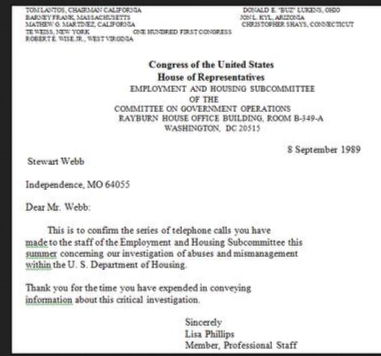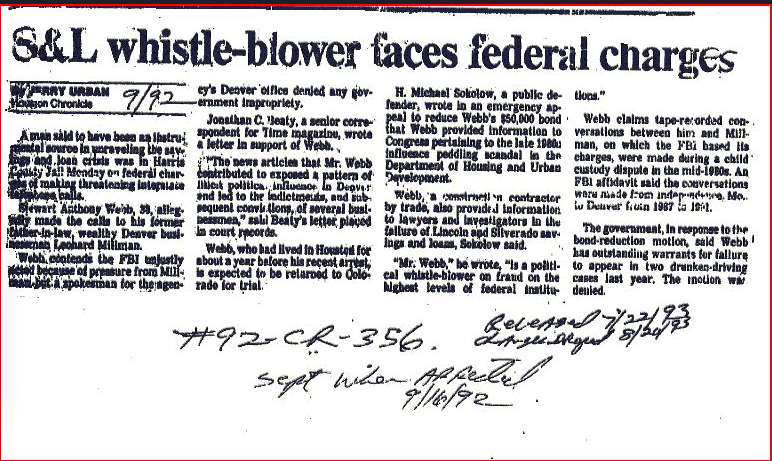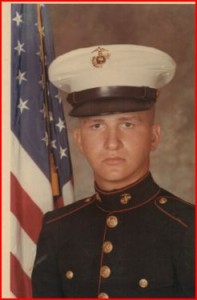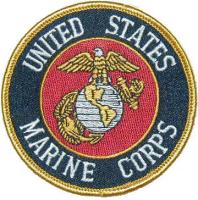007 Otis Johnson a History Lesson Hughes Glomar Explorer (CIA Spy Ship)
Otis Johnson my friend was on the Glow Mar Explorer picking up a Sunk Russian Nuclear Sub he told me the details RIP My Good Friend since 1992 – Stew Webb a Federal Whistle blower since 1986.
http://www.stewwebb.com/?s=Otis+Johnson&submit=Go
007 Otis Johnson Partner Jerry Henderson Las Vegas Underground Home
Howard Hughes who owned the Glow Mar Explorer had his office 4 stories Underground in Jerry Henderson office building The Dawson Building across the street from Jerry Henderson secret underground Las Vegas Home
007 Otis Johnson Partner Jerry Henderson Las Vegas Underground Home
Please cut and past the pdf link below into your brower to view the pictures and details..
http://www.stewwebb.com/007-Otis-Johnson-Partner-Jerry-Henderson-Las-Vegas-Underground-Home.pdf
Howard Hughes who owned the Glow Mar Explorer had his office 4 stories Underground in Jerry Henderson office building The Dawson Building across the street from Jerry Henderson secret underground Las Vegas Home
Please cut and past the pdf link below into your brower to view the pictures and details..
http://www.stewwebb.com/007-Otis-Johnson-Partner-Jerry-Henderson-Las-Vegas-Underground-Home.pdf
Spies are US says 007 Otis Johnson March 2012
http://www.stewwebb.com/2021/11/21/spies-are-us-says-007-otis-johnson-march-2012/
Stew Webb Radio NSA Otis Johnson Bluffdale Utah 2012
http://www.stewwebb.com/2020/08/06/stew-webb-radio-wednesday-august-5-2020/
RIP Otis Johnson Stone-R to death July 2017 by George HW Bush
http://www.stewwebb.com/2018/02/07/rip-otis-johnson-stone-r-to-death-july-2017-by-george-hw-bush/
RIP Otis Johnson Las Vegas Secret Underground Houses
http://www.stewwebb.com/2017/11/25/rip-otis-johnson-las-vegas-secret-underground-houses/
RIP Otis Johnson Raising Sunken Ships pt-1
http://www.stewwebb.com/2017/11/23/rip-otis-johnson-raising-sunken-ships-pt-1/
Hughes Glomar Explorer (CIA Spy Ship)
John Evans discusses his experience working on the Hughes Glomar Explorer, part of the secret CIA project to recover a sunken Soviet submarine from the ocean floor during the cold war.
(update) Produced by Jarel & Betty Wheaton for Peninsula Seniors www.pvseniors.org
Call Us
Visit Us
602 Deep Valley Drive, Suite 310
Rolling Hills Estates, CA 90274
Email Us
The Glowmar Explorer
https://www.history.com/videos
https://www.history.com/news/7-things-you-may-not-know-about-howard-hughes
https://www.history.com/news/7-things-you-may-not-know-about-howard-hughes
7 Things You May Not Know About Howard Hughes
From the development of his massive Spruce Goose aircraft to his involvement in a top-secret CIA plot to recover a Soviet sub, get the facts about the eccentric billionaire.
- Elizabeth Nix
- Updated:
Aug 22, 2018
Original:
Jul 7, 2015
1. Hughes was a millionaire at 18.
The 1901 discovery of oil at Spindletop, near Beaumont, Texas, marked the birth of the modern petroleum industry, and drew Hughes’ father, Howard Sr., a Harvard dropout, to East Texas to try his luck as a wildcatter. After becoming frustrated by the difficulty of drilling into hard-rock formations with the “fishtail” drill bit that was standard at the time, he devised a superior two-cone bit, which made drilling easier and revolutionized the oil industry. Hughes patented the technology in 1909 and, with partner Walter Sharp, formed the Houston-based Sharp-Hughes Tool Company to manufacture the bit. After Sharp died in 1912, Hughes bought his interest in the company. When he in turn passed away in 1924, Howard Jr., an only child whose mother had died two years earlier, inherited the thriving company and became a millionaire. The 18-year-old Hughes dropped out of Rice University, let others manage the oil-tool business and set out for Hollywood in 1925.
2. His directorial debut, “Hell’s Angels,” was one of the most expensive movies of its time.
Hughes started his movie career as a producer on the 1926 film “Swell Hogan,” which turned out to be so terrible it never made it into theaters. However, he soon had a box-office success with 1927’s “Two Arabian Knights,” which earned an Academy Award for best comedy direction. Hughes went on to direct his first film, “Hell’s Angels,” when the initial two directors on the project quit after clashing with the young Texas millionaire. In his quest to make the aerial scenes in “Hell’s Angels,” an action-adventure about World War I pilots, as realistic as possible, Hughes amassed a huge fleet of vintage planes and hired scores of pilots and mechanics. Three pilots died during production, and Hughes himself crashed a plane. “Hell’s Angels” initially was shot as a silent film, but following the fall 1927 release of “The Jazz Singer,” the first feature-length movie with synchronized dialogue, Hughes decided to reshoot with sound. He spent nearly $4 million to produce “Hell’s Angels,” which debuted in 1930 and was one of the most the most expensive films of its time. It also was a hit and put Hughes on the map in Hollywood. He later produced additional films but his only other directorial effort was 1943’s “The Outlaw,” a Western featuring Jane Russell.
3. Hughes set an around-the-world flight record.
During the 1930s, Hughes began to seriously pursue his passion for flying, establishing Hughes Aircraft Company in 1932 (it eventually became a major aerospace and defense contractor) and setting a series of aviation records. In 1935, he broke the record for flying a plane over land, traveling 352 miles per hour near Santa Ana, California. Two years later, he set a record for transcontinental U.S. speed, journeying from Burbank, California, to Newark, New Jersey, in 7 hours, 28 minutes and 25 seconds. On July 10, 1938, Hughes and a four-man crew took off from Brooklyn’s Floyd Bennett Field on an around-the-world flight. After dipping his Lockheed Super Electra’s wings over the Old Saybrook, Connecticut, home of his girlfriend Katharine Hepburn, Hughes made refueling stops in Paris, Moscow, Omsk and Yakutsk (both in Siberia), Fairbanks and Minneapolis before landing back in Brooklyn. There, thousands of spectators greeted Hughes, who had set a new record for circumnavigating the globe, with a time of three days, 19 hours and 17 minutes. He was hailed as a hero and honored with a ticker-tape parade in New York City and celebrations around the country.
4. His famous Spruce Goose aircraft was flown only once.
In 1942, during World War II, Hughes contracted with the U.S. government to design and build an aircraft capable of transporting 700 troops or a load of 60 tons across the Atlantic. Known by various names, including the H-4 Hercules, the Flying Boat and most commonly, the Spruce Goose (a moniker Hughes detested), it had a wingspan of 320 feet and was the largest aircraft ever constructed. However, the war ended before the plane was completed, and in 1947 Hughes was called to testify before a U.S. Senate committee investigating whether he’d misused millions of dollars in government funds on the project. At the hearings, Hughes said of the Spruce Goose: “I put the sweat of my life into this thing. I have my reputation rolled up in it and I have stated several times that if it’s a failure I’ll probably leave this country and never come back. And I mean it.”
After testifying in Washington, Hughes was determined to show his massive aircraft could fly, and on November 2, 1947, he piloted its first and only flight. The Spruce Goose (the nickname came from the fact it was constructed of wood due to wartime restrictions on steel and aluminum; however, birch, not spruce, was the primary building material) traveled for a mile about 70 feet above the water at Long Beach, California, before landing. Members of the Senate committee later issued a report criticizing Hughes’ handling of the Spruce Goose project but the document proved inconsequential. After the aircraft’s lone flight, Hughes shelled out millions to keep it in a climate-controlled Long Beach hangar until his 1976 death. It’s now housed at an aviation museum in Oregon.
5. Hughes was part of a CIA plot to recover a sunken Soviet submarine.
CIA launched a complex covert operation, codenamed Project Azorian, to recover it the Hughes Glomar Explorer.
In March 1968, during the Cold War, a Soviet submarine carrying nuclear-armed ballistic missiles accidentally sank in the Pacific Ocean. The Soviets embarked on a two-month search for the sub but were unable to locate it; not long afterward, the U.S. found it some 1,500 miles northwest of Hawaii, 16,500 feet below the water’s surface. Believing the 1,750-ton sub was a source of important intelligence information, the CIA launched a complex covert operation, codenamed Project Azorian, to recover it. The U.S. commissioned the construction of a ship with the specialized capabilities needed to lift the sub from the ocean’s depths, and the CIA devised a cover story that the vessel, named the Hughes Glomar Explorer, was being built for Howard Hughes, who planned to use it for a new commercial venture: mining minerals from the ocean floor.
The Glomar Explorer finally arrived at the wreckage site in the summer of 1974 but was unable to retrieve the whole sub because a portion broke off as it was being raised. A second recovery effort was planned; however, in the meantime there was a burglary at the Los Angeles headquarters of Hughes’ Summa Corporation, and among the stolen items was thought to be a secret document linking Howard Hughes to the CIA and the Glomar Explorer. The news media learned about the burglary and the story of the Glomar Explorer’s real purpose became public in 1975. As a result, the mission to recover the rest of the sub was scrapped.
6. When a Vegas hotel tried to kick him out, he bought the place.
Faced with a huge tax bill in California, he decided to move to Las Vegas in late 1966, arriving by private train car and taking up residence on the top floor of the Desert Inn. When the hotel’s owner tried to evict Hughes and his staff, who didn’t gamble, in order to free up rooms for high-roller guests, Hughes decided to buy the place (technically, he purchased a long-term lease), for $13 million. Afterward, he went on a Vegas buying spree, snapping up other hotel-casinos, an airport and airline and various tracts of undeveloped land. Also, because Hughes, by then a recluse who never left his Desert Inn penthouse, wanted to watch his favorite old movies on late-night TV—and the city had no all-night stations–he acquired a local TV station of his own.
After four years in Vegas, during which time he became one of Nevada’s biggest employers and private landholders, he left abruptly in 1970. He spent the final six years of his life living in hotels in the Bahamas, Nicaragua, Vancouver, London and Acapulco.
7. A planned Hughes autobiography turned out to be a hoax.
In December 1971, McGraw-Hill, a New York City publishing company, announced it would publish Hughes’ autobiography, with excerpts slated to appear in Life magazine. Shortly after the announcement, officials at the Hughes Tool Company denounced the planned book as a fake. However, McGraw-Hill and Life denied this charge and expressed confidence in the authenticity of the manuscript, which Hughes supposedly collaborated on with Clifford Irving, who’d previously published works of fiction and non-fiction. McGraw-Hill had handwritten letters said to be from Hughes along with other project-related items with his signature; these were submitted to a respected handwriting analysis firm, which determined they’d been written by Hughes. In January 1972, the reclusive mogul, then residing at a hotel in the Bahamas, held a press conference by phone with a group of journalists he’d once known. Hughes, who hadn’t spoken with the media in years, said the autobiography was made up and he’d never met Irving. The press conference generated headlines across the country, and weeks later Irving, who’d received a $750,000 advance, admitted the manuscript was a fabrication. He served 17 months in prison for his elaborate scheme, which was the basis for the 2006 movie “The Hoax,” starring Richard Gere as Irving.
GSF Explorer, formerly USNS Hughes Glomar Explorer (T-AG-193), was a deep-sea drillship platform built for Project Azorian, the secret 1974 effort by the …
Construction · Project Azorian · After Project Azorian · References
Cost: >$350 million (1974) (>$1.46 billion in 2020 dollars.)
In service: 1 July 1973
Owner: Transocean
Propulsion: Diesel-electric; 5 × Nordberg 16-cylinder diesel engines driving 4,160 V AC generators turning 6 × 2,200 hp (1.6 MW) …
https://www.coffeeordie.com/howard-hughes-glomar-explorer
Burial at sea of Soviet Submariners from Hughes Glomar Explorer
Glomar Explorer – Wikipedia
en.wikipedia.org › wiki › Glomar_Explorer
https://en.wikipedia.org/wiki/Glomar_Explorer
Glomar Explorer
From Wikipedia, the free encyclopedia
Jump to navigation Jump to search
This article is about the CIA ship used to recover a sunken Soviet submarine as part of Project Azorian. For the deep-sea oceanographic research and scientific drilling vessel, see Glomar Challenger.
| History | |
| Name | GSF Explorer |
| Owner | Transocean |
| Operator | Transocean |
| Port of registry | Port Vila, Vanuatu |
| Builder | ·Sun Shipbuilding & Drydock Co.
·Chester, Pennsylvania |
| Cost | >$350 million (1974) (>$1.46 billion in 2020 dollars.[2]) |
| Laid down | 1971 |
| Launched | 4 November 1972 |
| Completed | 31 July 1998 |
| Acquired | 2010 |
| Identification | ·ABS class no: 7310452
·Call sign: YJQQ3 |
| Fate | Scrapped |
| Notes | [1] |
| United States | |
| Name | Hughes Glomar Explorer |
| Namesake | Howard Hughes |
| Builder | Sun Shipbuilding and Drydock Co. |
| Launched | 4 November 1972 |
| In service | 1 July 1973 |
| Fate | Scrapped, 2015 |
| Notes | [1] |
| General characteristics | |
| Type | Drillship |
| Displacement | 50,500 long tons (51,310 t) light |
| Length | 619 ft (189 m) |
| Beam | 116 ft (35 m) |
| Draft | 38 ft (12 m) |
| Propulsion | ·Diesel-electric
·5 × Nordberg 16-cylinder diesel engines driving 4,160 V AC generators turning 6 × 2,200 hp (1.6 MW) DC shaft motors, twin shafts |
| Speed | 10 knots (19 km/h; 12 mph) |
| Complement | 160 |
| Notes | [1] |
GSF Explorer, formerly USNS Hughes Glomar Explorer (T-AG-193), was a deep-sea drillship platform built for Project Azorian, the secret 1974 effort by the United States Central Intelligence Agency‘s Special Activities Division to recover the Soviet submarine K-129.[3][4]
Contents
Construction
The ship was built as Hughes Glomar Explorer in 1971 and 1972 by Sun Shipbuilding and Drydock Co. for more than US$350 million (about $1.5 billion in 2020) at the direction of Howard Hughes for use by his company, Global Marine Development Inc.[5] It began operation on 20 June 1974.
Hughes told the media that the ship’s purpose was to extract manganese nodules from the ocean floor. This marine geology cover story became surprisingly influential, causing many others to examine the idea.
Project Azorian
Main article: Project Azorian
The Soviet diesel-electric submarine K-129 sank in the Pacific Ocean 1,560 miles (2,510 km) NW of Hawaii,[6] on 8 March 1968. The USS Halibut identified the wreck site and the CIA crafted an elaborate and highly secret plan to recover the submarine for intelligence purposes. As K-129 had sunk in very deep water, at a depth of 16,500 feet (3 miles or 5 kilometres), a large ship was required for the recovery operation. Such a vessel would be detected easily by Soviet vessels, which might then interfere with the operation, so an elaborate cover story was developed. The CIA contacted Hughes, who agreed to help.[7]
In 1974, the ship recovered a portion of K-129, but as the section was being lifted to the surface, a mechanical failure in the grapple caused two-thirds of the recovered section to break off.[8] This lost section is said to have held many of the most-sought items, including the code book and nuclear missiles. The recovered section held two nuclear-tipped torpedoes and some cryptographic machines, along with the bodies of six Soviet submariners, who were given a formal, filmed burial at sea.[9]
The operation became public in February 1975 when the Los Angeles Times published a story about “Project Jennifer”. Other news organizations, including The New York Times, added details. The CIA declined to either confirm or deny the reports, a tactic that became known as the Glomar response and subsequently used to confront all manner of journalistic and public inquiry, including Freedom of Information Act requests.[10] The actual name, Project Azorian, became public only in 2010.
The publication Red Star Rogue (2005) by Kenneth Sewell claims “Project Jennifer” recovered virtually all of K-129 from the ocean floor.[11][12] Sewell states, “[D]espite an elaborate cover-up and the eventual claim that Project Jennifer had been a failure, most of K-129 and the remains of the crew were, in fact, raised from the bottom of the Pacific and brought into the Glomar Explorer“.[N 1]
A subsequent movie and book by Michael White and Norman Polmar (Project Azorian: The CIA and the Raising of the K-129) revealed testimony from on-site crewmen as well as B&W video of the actual recovery operation. These sources indicate that only the forward 38 ft (12 m) of the submarine were recovered.
After Project Azorian
Mothballing
Glomar Explorer mothballed in Suisun Bay, California, during June 1993.
While the ship had an enormous lifting capacity, there was little interest in operating the vessel because of her great cost. From March to June 1976, the General Services Administration (GSA) published advertisements inviting businesses to submit proposals for leasing the ship.[14] By the end of four months, GSA had received a total of seven bids, including a US$2 offer submitted by Braden Ryan, a Lincoln, Nebraska college student,[15] and a US$1.98 million offer ($7.15 million in 2020) from a man who said he planned to seek a government contract to salvage the nuclear reactors of two United States submarines. The Lockheed Missile and Space Company submitted a US$3 million ($10.83 million in 2020), two-year lease proposal contingent upon the company’s ability to secure financing. GSA had already extended the bid deadline twice to allow Lockheed to find financial backers for its project without success and the agency concluded there was no reason to believe this would change during the near future.
Although the scientific community rallied to the defense of Hughes Glomar Explorer, urging the president to maintain the ship as a national asset, no agency or department of the government wanted to assume the maintenance and operating cost.[16] Subsequently, during September 1976, the GSA transferred Hughes Glomar Explorer to the Navy for storage, and during January 1977, after it was prepared for dry docking at a cost of more than two million dollars, the ship became part of the Navy’s Suisun Bay Reserve Fleet.[17]
Lease, sale and disposal
In September 1978, Ocean Minerals Company consortium of Mountain View, California, announced it had leased Hughes Glomar Explorer and that in November would begin testing a prototype deep-sea mining system in the Pacific Ocean. The consortium included subsidiaries of the Standard Oil Company of Indiana, Royal Dutch Shell, and Boskalis Westminster Group NV of the Netherlands. The consortium’s prime contractor was the Lockheed Missiles and Space Company.
In late 1996, the ship was towed from the mothball fleet in Suisun Bay to San Francisco Bay, where much of the existing rig structure around the moon pool, including the massive gimbal was removed.[18] Following this, she was towed North to Portland, Oregon, for drydocking, closing up much of the submarine-sized moonpool, and engine repairs, among other things.
In June 1997, the ship departed Portland under its own power and sailed around South America and up to Atlantic Marine’s shipyard in Mobile, Alabama, for conversion to a dynamically-positioned deep sea drilling ship, capable of drilling in waters of 7,500 feet (2,300 m) and, with some modification, up to 11,500 feet (3,500 m), which was 2,000 feet (610 m) deeper than any other existing rig at the time. The conversion cost more than $180 million ($272 million in 2020) and was completed during the first quarter of 1998.[citation needed]
The conversion of the vessel from 1996–1998 was the start of a 30-year lease from the U.S. Navy to Global Marine Drilling at a cost of US$1 million per year ($1.5 million per year in 2020). Global Marine merged with Santa Fe International Corporation during 2001 to become GlobalSantaFe Corporation, which merged with Transocean in November 2007 and operated the vessel as GSF Explorer.[citation needed]
In 2010, Transocean bought the vessel for a US$15 million ($18 million in 2020) in cash.[19]
The vessel was reflagged from Houston to Port Vila, Vanuatu, in the third quarter of 2013.[20]
During her 18-year drilling career, she worked in the Gulf Of Mexico, Nigeria, the Black Sea, Angola, Indonesia and India, with various shipyards and port visits along the way, with numerous oil company clients. Crew members fondly referred to her as “The Mothership”.
Transocean announced in April 2015 that the ship would be scrapped.[21] The ship arrived at the ship breakers at Zhoushan, China, on June 5, 2015.[22]
See also
References
Notes
- Minutes of the Sixth Plenary Session, USRJC, Moscow, 31 August 1993.[13]
Citations
- “ABS Record: GSF Explorer.” American Bureau of Shipping, 2010. Retrieved: 25 December 2010.
- · Johnston, Louis; Williamson, Samuel H. (2022). “What Was the U.S. GDP Then?”. MeasuringWorth. Retrieved 12 February 2022. United States Gross Domestic Product deflator figures follow the Measuring Worth series.
- · Burleson 1997, p. 52.
- · “Mysteries of the Deep: Raising Sunken Ships: The Glomar Explorer.” Scientific American Frontiers (PBS), p. 2. Retrieved: 25 December 2010.
- · Snieckus, Darius. “…and another thing… An offshore Hughes who… “ OilOnline, 1 November 2001. Retrieved: 25 December 2010.
- · GWU National Security Archive
- · Phelan, James. “An Easy Burglary Led to the Disclosure of Hughes-C.I.A. Plan to Salvage Soviet Sub”. The New York Times, 27 March 1975, p. 18.
- · Sontag et al. 1998, p. 196.
- · Sontag et al. 1998, p. 277.
- · “Neither Confirm Nor Deny”. Radiolab. Radiolab, WNYC. 12 February 2014. Retrieved 18 February 2014.
- · Sewell 2005, pp. 128, 148.
- · Podvig 2001, p. 243.
- · Sewell 2005, pp. 131, 261.
- · “Notice of Availability for Donation of the Test Craft Ex-Sea Shadow (IX-529) and Hughes Mining Barge (HMB-1).” Federal Register, Volume 71, Number 178, 14 September 2006, p. 54276.
- · Dean, Josh (2018). The Taking of K-129 : How the CIA used Howard Hughes to steal a Russian sub in the most daring covert operation in history. Dutton Caliber. ISBN 978-1101984451.
- · Toppan, Andrew. “The Hughes Glomar Explorer’s Mission.” the-kgb.com. Retrieved: 25 December 2010.
- · Pike, John. “Project Jennifer: Hughes Glomar Explorer.” Intelligence Resource Program via fas.org, 16 February 2010. Retrieved: 25 December 2010.
- · Nolte, Carl (6 November 1996). “Spy Ship Gets New Life / Glomar Explorer to become a deep-sea drilling rig”. SFGATE. Retrieved 1 March 2022.
- · “Transocean 10Q SEC Filing on 4 August 2010.”brand.edgar-online.com. Retrieved: 25 December 2010.
- · rigzone.com Archived 17 December 2013 at the Wayback Machine Retrieved: 17 December 2013.
- · “Transocean’s new fleet status, scraps GSF Explorer” Offshore Engineer Retrieved: 17 April 2015.
- · Journal of the World Ship Society Volume 69, No 11, November 2015 Retrieved 17 December 2015.
Bibliography
- Burleson, Clyde W. The Jennifer Project. College Station, Texas: Texas A&M University Press, 1997. ISBN 978-0-89096-764-5.
- DeLuca, Marshall and William Furlow, eds. “Steeped in history, Glomar Explorer finally returns to industry, Converted vessel set to drill in record water depth.” Offshore magazine, Volume 58, Issue 3, March 1998.
- Dunham, Roger C. Spy Sub: Top Secret Mission To The Bottom Of The Pacific. New York: Penguin Books, 1996. ISBN 0-451-40797-0.
- Podvig, Pavel, ed. Russian Strategic Nuclear Forces. Stanford, CA: Stanford University, 2001. ISBN 0-262-16202-4. (originally published by Center for Arms Control Studies, Moscow Institute of Physics and Technology)
- Polmar, Norman & Michael White. PROJECT AZORIAN-The CIA and the Raising of the K-129. Naval Institute Press. 2010. ISBN 978-1-59114-690-2.
- Sewell, Kenneth. Red Star Rogue: The Untold Story of a Soviet Submarine’s Nuclear Strike Attempt on the U.S. New York: Simon & Schuster, 2005. ISBN 0-7432-6112-7.
- Sharp, David (2012). The CIA’s Greatest Covert Operation: Inside the Daring Mission to Recover a Nuclear-Armed Soviet Sub. Lawrence, KS: University Press of Kansas. p. 344. ISBN 978-0-7006-1834-7. Archived from the original on 28 July 2012. Retrieved 3 May 2012.
- Sontag, Sherry, Christopher Drew with Annette Lawrence Drew. Blind Man’s Bluff: The Untold Story of American Submarine Espionage. New York: Harper, 1998. ISBN 0-06-103004-X.
- Varner, Roy and Wayne Collier. A Matter of Risk: The Incredible Inside Story of the CIA’s Hughes Glomar Explorer Mission to Raise a Russian Submarine. New York: Random House, 1978. ISBN 0-394-42432-8.
External links
Wikimedia Commons has media related to USNS Glomar Explorer (T-AG-193).
- Photo gallery of USNS Glomar Explorer at NavSource Naval History
- AZORIAN The Raising of the K-129 / 2009 – 2 Part TV Documentary / Michael White Films Vienna
- Transocean, Inc.
- New life as a Global Drilling
- Images of the ship
- Images of HMB-1, the Hughes mining barge which held the recovery claw
- Project overview
- Overview of Project Jennifer
- Virtual tour inside HMB-1 and Sea Shadow, 2011, includes HMB-1 operating manual.
- Glomar Explorer Technical Description
- The secret on the ocean floor, BBC (2018).
- K-129 submarine sinking accident
- Howard Hughes
- 1972 ships
- Cold War auxiliary ships of the United States
- Miscellaneous auxiliaries of the United States Navy
- Drillships
- Ships built by the Sun Shipbuilding & Drydock Company
- Transocean
Navigation menu
- Not logged in
- Talk
- Contributions
- Create account
- Log in
Search
Contribute
Tools
- What links here
- Related changes
- Special pages
- Permanent link
- Page information
- Cite this page
- Wikidata item
Print/export
In other projects
Languages
- This page was last edited on 15 August 2022, at 17:45 (UTC).
- Text is available under the Creative Commons Attribution-ShareAlike License 3.0; additional terms may apply. By using this site, you agree to the Terms of Use and Privacy Policy. Wikipedia® is a registered trademark of the Wikimedia Foundation, Inc., a non-profit organization.
https://www.youtube.com/results?search_query=the+glomar+explorer
Wikipedia
Project Azorian was a U.S. Central Intelligence Agency project to recover the sunken Soviet submarine K-129 from the Pacific Ocean floor in 1974, using the purpose-built ship Hughes Glomar Explorer. The 1968 sinking of K-129 occurred approximately 1,600
Howard Hughes, the CIA, the Glomar Explorer and the sunken Russian Submarine
Project Azorian
Project Azorian: The Secret US Mission to Recover a Soviet Submarine
The Jennifer Project
Howard Hughes, the CIA, the Glomar Explorer and the sunken Russian Submarine
Hughes Glomar Explorer (CIA Spy Ship)
John Evans discusses his experience working on the Hughes Glomar Explorer, part of the secret CIA project to recover a sunken Soviet submarine from the ocean floor during the cold war. (update) Produced by Jarel & Betty Wheaton for Peninsula Seniors www.pvseniors.org












